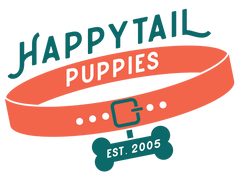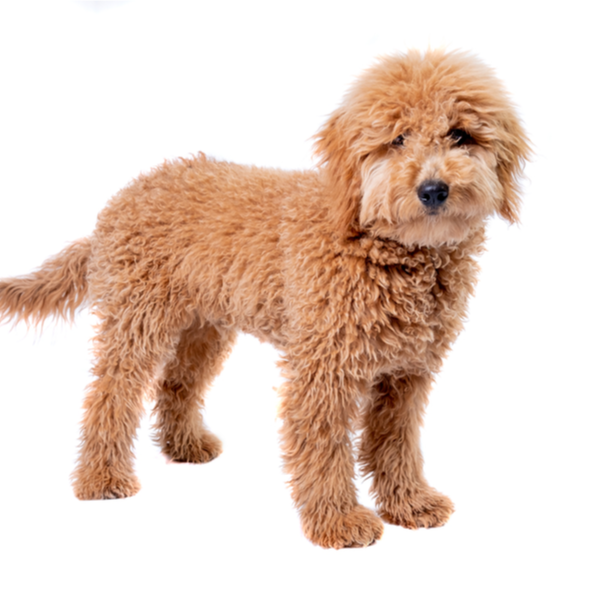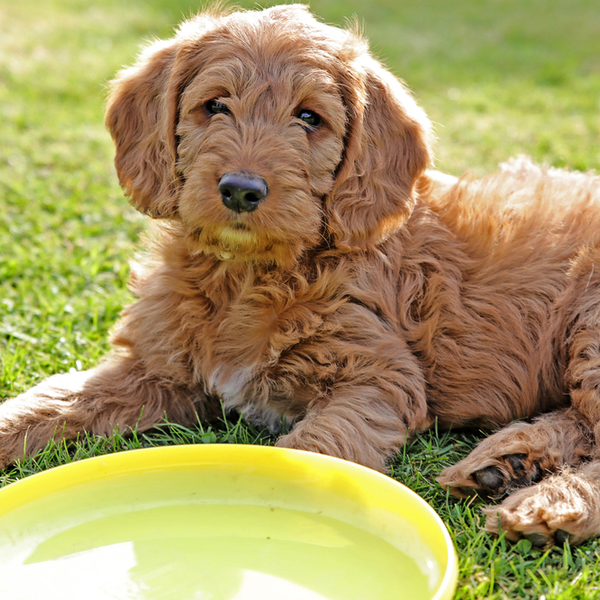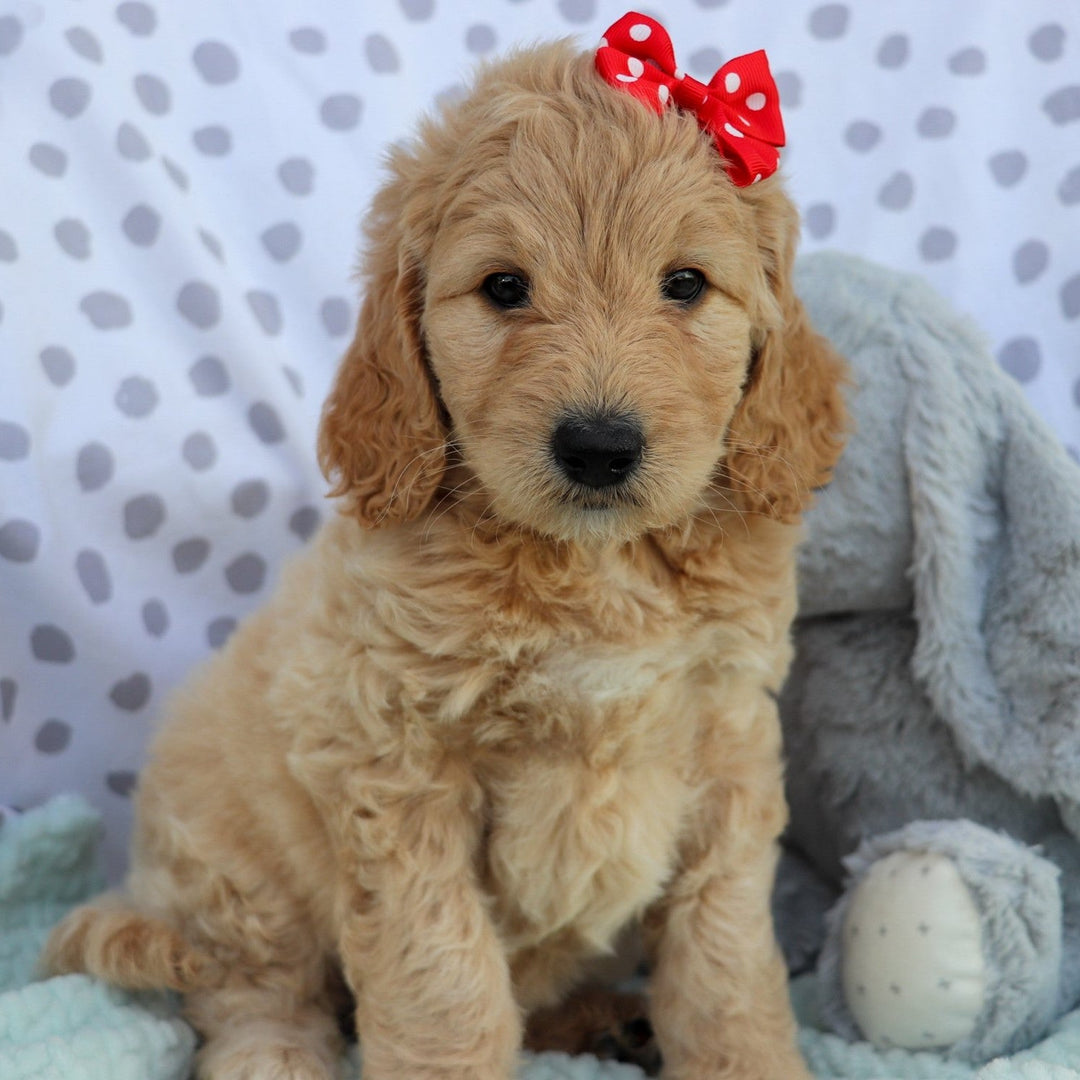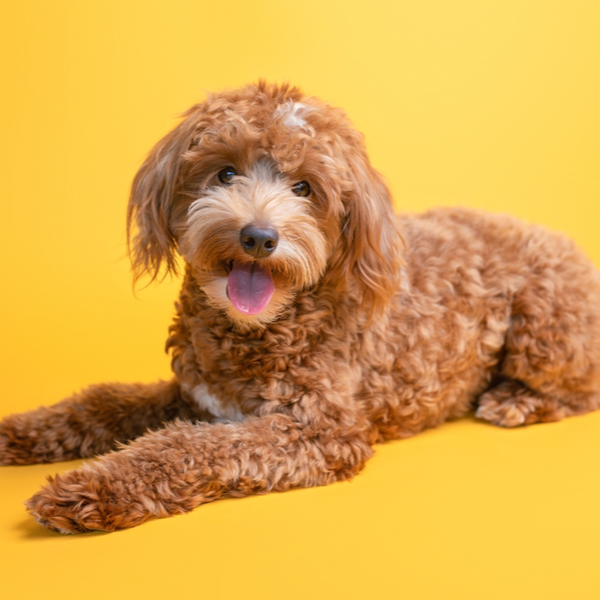
MINIATURE IRISH Doodle PUPPIES
Intelligent. Energetic.
The Miniature Irish Doodle is also called Irish Doodle Setter, Irish Poo Setter, Irish Setterdoodle, or Irish Setterpoo. It’s the result of a deliberate cross between Irish Setters and Poodles, and it was bred for hunting and retrieving. Both parent breeds are typically intelligent, sensitive, and active, and the Mini Irish Doodle reflects those qualities. Miniature Irish Doodles have a fondness for people, and they make good family dogs because they’re pleasant and playful, and generally tolerant of both children and other animals. Both parent breeds are still used in hunting today, and your Irish Doodle should absolutely be up to the task. They are talented at hunting and retrieving, and they may also excel at agility, advanced obedience, tracking, and even freestyle dancing. Don’t leave your pup alone too long; a bored Irish Doodle can be anxious and destructive.

Temperament
Their intelligence makes them exceptionally trainable, and once a behavior is learned, it’s not likely to be unlearned. While this is great for manners and obedience, it’s less great when they figure out how to open doors and cabinets. They do have a stubborn streak reminiscent of Irish Setters, so be ready for training to be challenging sometimes.
For the most part, these are happy-go-lucky pups who love to learn and play.

Appearance
Their coat varies, but is beautiful, hypoallergenic and somewhat long and wavy (though many Irish Doodles have more soft and curly hair like their Poodle ancestors).
The Mini Irish Doodle’s average height is 12 to 17 inches and the average weight is 25 to 35 pounds.

Exercise
This breed is really too active and vocal to acclimate well to apartment living. They are much happier in a larger home and yard in which to run.
We recommend 90 minutes of activity a day and about 12 miles of walking per week.
The Irish Doodle is a cross between two hunting dogs, the German retrieving Poodle, and the elegant red field hunting Irish Setter. The Poodle was developed in Germany where it was called “Pudlehund:” “pudle” meaning to splash around, and “hund” meaning dog. It was originally bred to retrieve waterfowl for hunters, though in modern times it has evolved to become more of a companion animal. The Irish Setter was bred in Ireland in the 1700s as a field hunting dog, but the breed grew in popularity there and throughout the British Isles. Irish Setters are believed to be the ancestors of Irish Water Spaniels, Irish Terriers, and Golden Setter, though official records don’t exist. The earliest Irish Setters were either red and white and yellow and white, but their characteristic deep red color became the ideal in the mid-1800s. The breed came to the United States as gun dogs and game-bird retrievers and the American Kennel Club recognized them in 1878.
Major health concerns to be aware of:
- Hip Dysplasia
- Bloat
- Eye Diseases and Disorders
Minor health concerns to be aware of:
- Epilepsy
- Color Dilution
- Alopecia
- Skin Diseases and Disorders
While your Mini Irish Doodle will only need to bathe as necessary, usually just a few times a year, regular brushing and styling are essential. Most will need to be clipped or trimmed regularly regardless of the type of coat they inherit. It’s also crucial to check and clean your pup’s ears regularly because they are prone to both internal and external infections.

